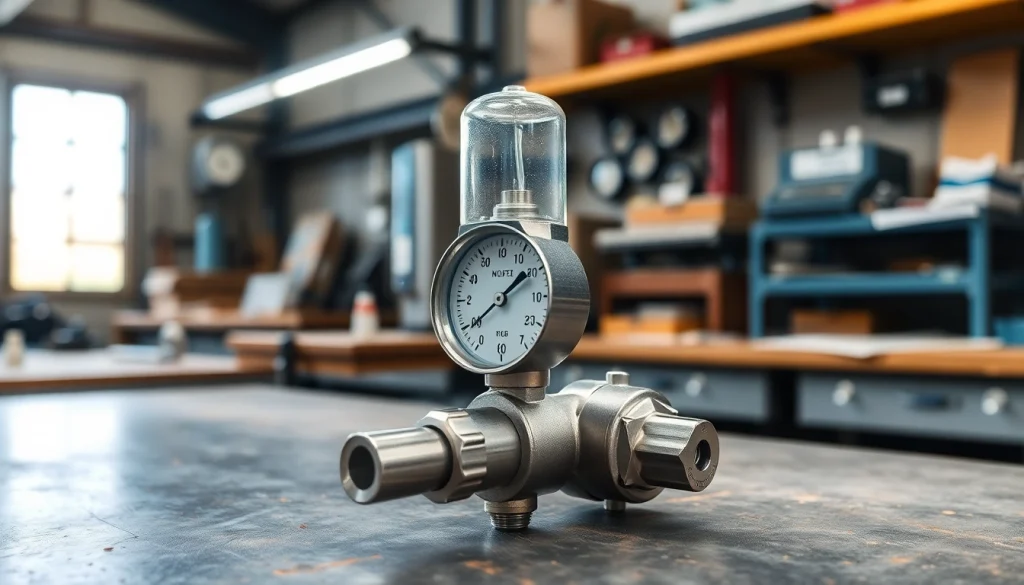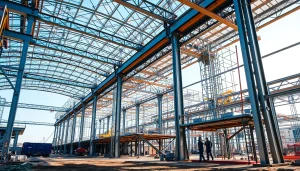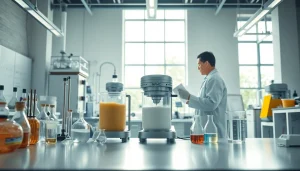Understanding Nitrogen Regulators
Nitrogen regulators are critical components in various industrial applications, especially related to gas handling and pressurization systems. Their primary role is to control the pressure of nitrogen gas from high-pressure cylinders to suitable levels required for various processes. For anyone looking to acquire or understand these devices, exploring the functioning, components, and applications of nitrogen regulators is essential. For an in-depth look at specific products, you can check out a selection of nitrogen regulators available in the market.
What is a Nitrogen Regulator?
A nitrogen regulator is a device that reduces the high pressure of nitrogen gas coming from a cylinder to a safe and usable level for specific applications. The regulator does this while maintaining a steady output pressure, ensuring that the gas flow is consistent and safe. This is crucial in various settings, including HVAC systems, food and beverage service, and industrial manufacturing processes. Without a reliable nitrogen regulator, fluctuating pressure levels can lead to inefficient operation, equipment damage, or even hazardous situations.
Key Components of Nitrogen Regulators
Nitrogen regulators are composed of several key components working together to manage gas pressure effectively:
- Pressure Gauge: Displays the output pressure of nitrogen after regulation.
- Adjustment Knob: Allows users to set and modify the output pressure to meet specific requirements.
- Inlet Connection: Connects to the nitrogen gas cylinder, typically equipped with a CGA fitting.
- Outlet Connection: Provides a pathway for regulated nitrogen to flow to the target application.
- Diaphragm: A sensitive membrane that reacts to changes in pressure, enabling the regulator to adjust constantly.
Applications of Nitrogen Regulators
Nitrogen regulators find extensive use across various industries. Some notable applications include:
- HVAC Systems: Regulating nitrogen pressure during system leak testing to identify leaks.
- Food and Beverage: In draft beer systems where nitrogen is used to maintain carbonation and dispense beverages.
- Manufacturing: Ensuring proper pressure levels for processes like material coating, welding, and pharmaceutical production.
- Laboratories: Controlling nitrogen flow in analytical instruments and for various experimental setups.
Choosing the Right Nitrogen Regulator
Selecting the right nitrogen regulator is crucial for optimal performance and safety. Various types and features should be considered when making your choice.
Types of Nitrogen Regulators and Their Uses
There are several types of nitrogen regulators designed for specific tasks:
- Single-Stage Regulators: Ideal for applications requiring consistent pressure output and simplicity. Commonly used in low-pressure applications such as food and beverage services.
- Dual-Stage Regulators: Recommended for high-pressure tasks that demand precise pressure control. These are beneficial in laboratory and manufacturing settings where pressure stability is critical.
- High-Pressure Regulators: Designed to handle extensive pressure ranges, suitable for substances like liquid nitrogen.
Factors to Consider When Selecting a Nitrogen Regulator
When choosing a nitrogen regulator, consider the following:
- Pressure Range: Ensure the regulator can handle the required inlet and outlet pressures for your application.
- Flow Rate: Evaluate the flow rate needed for your processes to ensure that the regulator can meet demand.
- Material Compatibility: Select a regulator made from materials compatible with nitrogen to avoid corrosion and contamination.
- Safety Features: Look for features such as pressure relief valves and burst disks that enhance safety during operation.
How to Evaluate Quality and Performance
Assessing the quality and performance of a nitrogen regulator can involve:
- Brand Reputation: Research the manufacturer’s reputation and history in producing reliable gas regulators.
- User Reviews: Review testimonials and feedback from operations similar to yours.
- Certifications: Check for certificates of compliance with industry standards, ensuring safety and performance criteria are met.
How to Install and Use Nitrogen Regulators
Proper installation and usage are key to achieving optimal performance from a nitrogen regulator.
Safe Installation Practices
To install a nitrogen regulator safely, follow these practices:
- Read Manufacturer Guidelines: Always refer to manufacturer instructions for specific installation recommendations.
- Ensure Proper Connections: Fasten connections tightly and check for leaks before use.
- Use Appropriate Tools: Utilize necessary tools to avoid damaging components during installation.
- Test for Leaks: Use a leak detection solution on connections to identify potential gas leaks before fully engaging the system.
Common Errors in Regulator Setup
Some errors to avoid during installation include:
- Improper connection to gas cylinders, which can lead to safety hazards.
- Neglecting to check for leaks or pressure testing after installation.
- Incorrect adjustments of the pressure settings before use, leading to system failures.
Effective Usage Techniques for Optimal Performance
To get the best performance from a nitrogen regulator, consider these tips:
- Regularly monitor gauges to ensure pressure settings remain consistent.
- Adjust pressures according to changes in operational needs while following safety guidelines.
- Periodically test the system for leaks and proper functionality, ensuring long-term reliability.
Maintenance of Nitrogen Regulators
Regular maintenance is essential for prolonging the lifespan and ensuring the reliability of nitrogen regulators.
Signs Your Nitrogen Regulator Needs Maintenance
Watch for these signs indicating the need for maintenance:
- Pressure Fluctuations: Inconsistent readings on the pressure gauge can indicate malfunction.
- Physical Damage: Inspect the regulator for signs of wear, corrosion, or damage.
- Gas Leaks: Detecting a gas leak from the regulator is a critical issue that requires immediate attention.
Cleaning and Care Tips for Longevity
To maintain your nitrogen regulator effectively:
- Follow the manufacturer’s cleaning guidelines to avoid damaging sensitive components.
- Keep connections and components free from dust and debris that may affect performance.
- Inspect seals and O-rings regularly and replace them if they show signs of wear.
When to Seek Professional Help
Consult a professional when:
- Your regulator exhibits persistent issues despite regular maintenance.
- You notice significant wear or damage that could impact safety or performance.
- You require specialized adjustments or recalibrations for your operations.
Future Trends in Nitrogen Regulation Technology
The field of nitrogen regulation is evolving with advancements in technology, which brings exciting possibilities for efficiency and safety.
Innovations in Nitrogen Regulator Design
Upcoming innovations may include:
- Smart regulators that integrate IoT technology for real-time monitoring and analytics.
- More robust materials designed to withstand increased pressure and provide longer service life.
- Modular designs allowing for easy replacement of parts rather than whole units, reducing waste.
Impact of Technology on Efficiency and Safety
Technological advancements are expected to enhance:
- Precision in pressure control, ensuring optimal utilization of nitrogen across various applications.
- Safety protocols, with sensors that detect anomalies and can shut down the system automatically to prevent accidents.
- Data-collection capabilities that help in predicting maintenance needs based on usage patterns.
Preparing for Changes in Industry Standards
As technology evolves, so do industry standards. Companies should keep informed about:
- New regulations that may affect nitrogen usage across various sectors.
- Innovative practices that enhance sustainability within gas-related industries.
- Training and certification options for personnel to handle advanced nitrogen regulators effectively.








